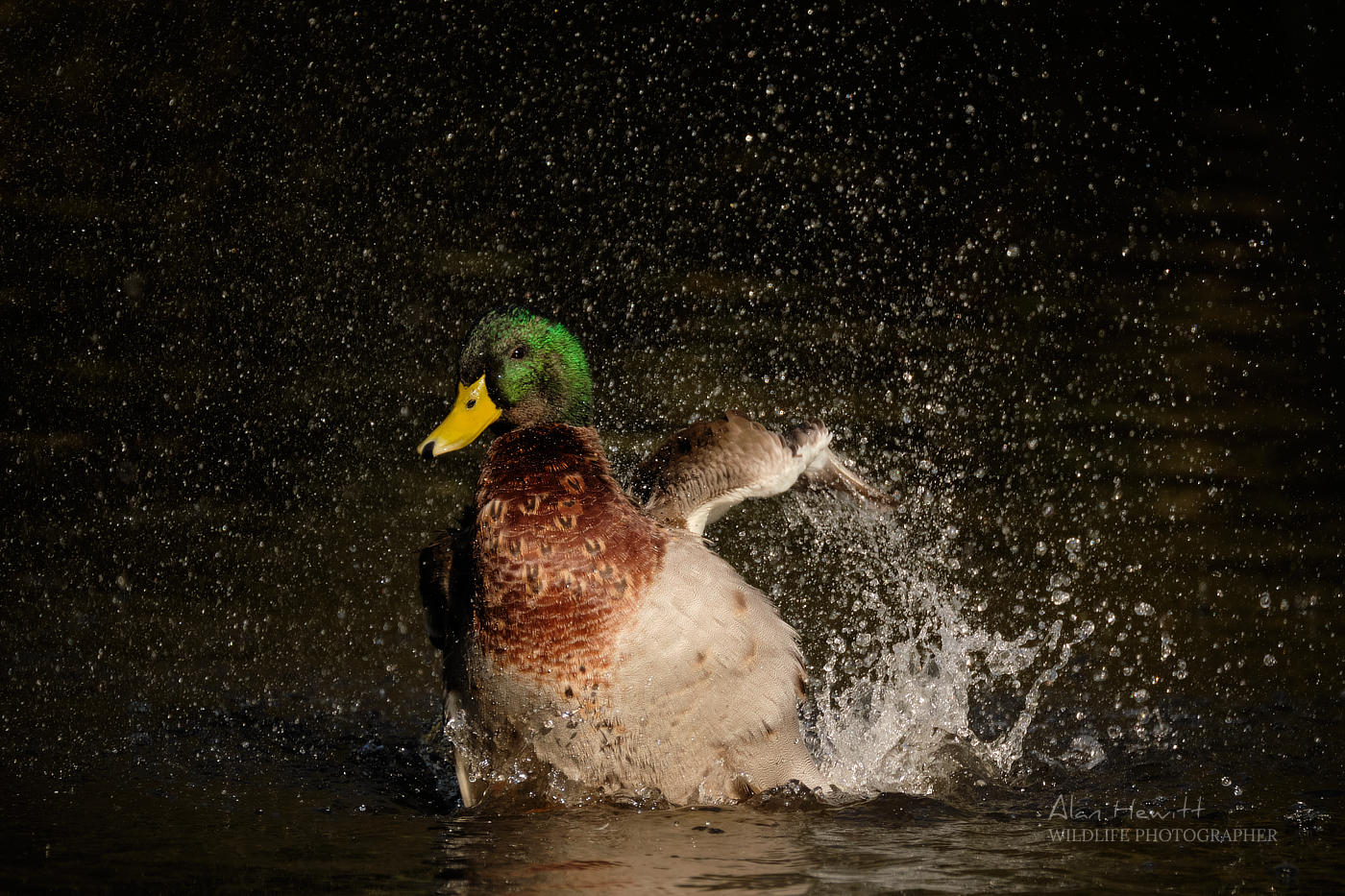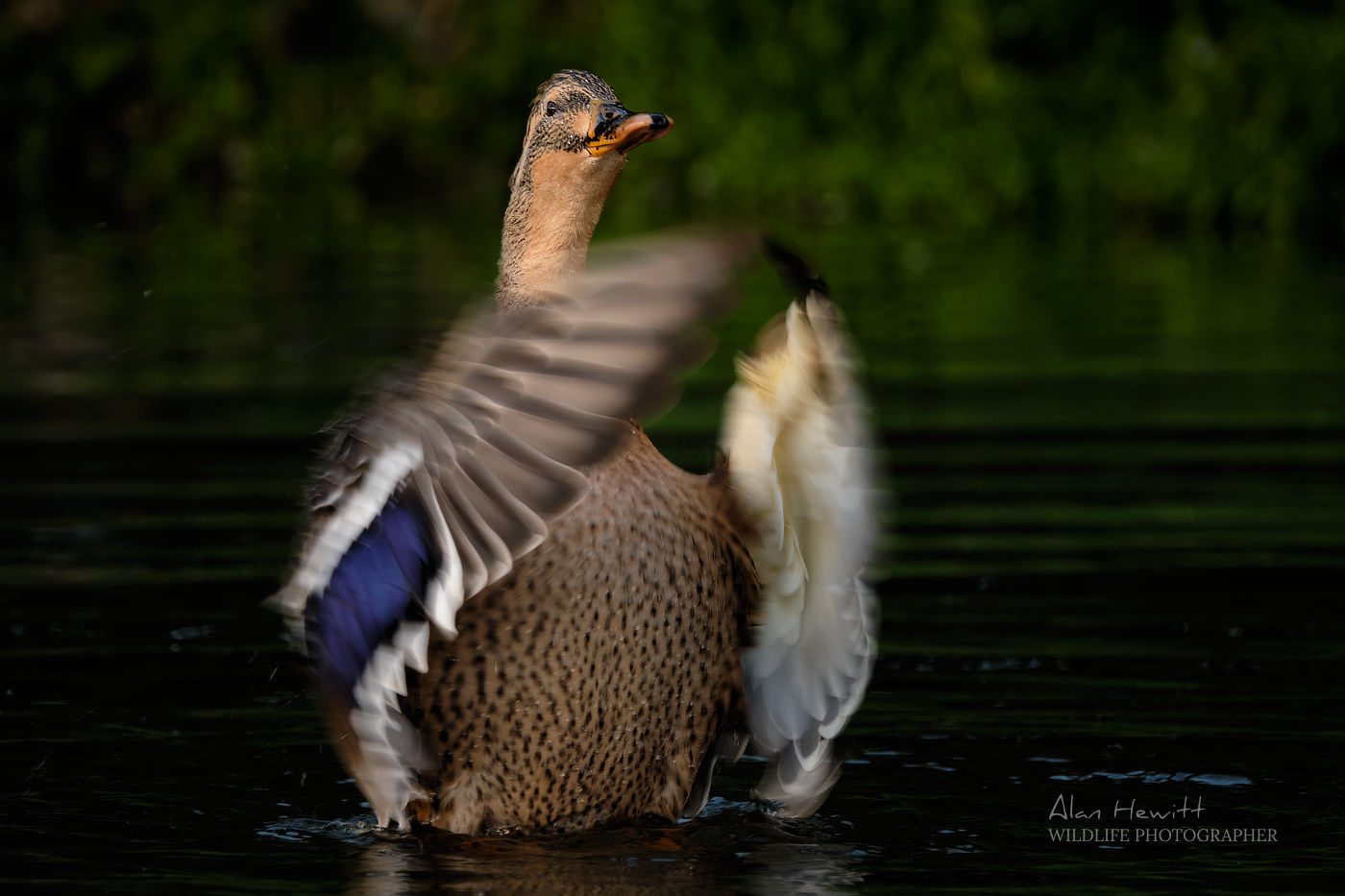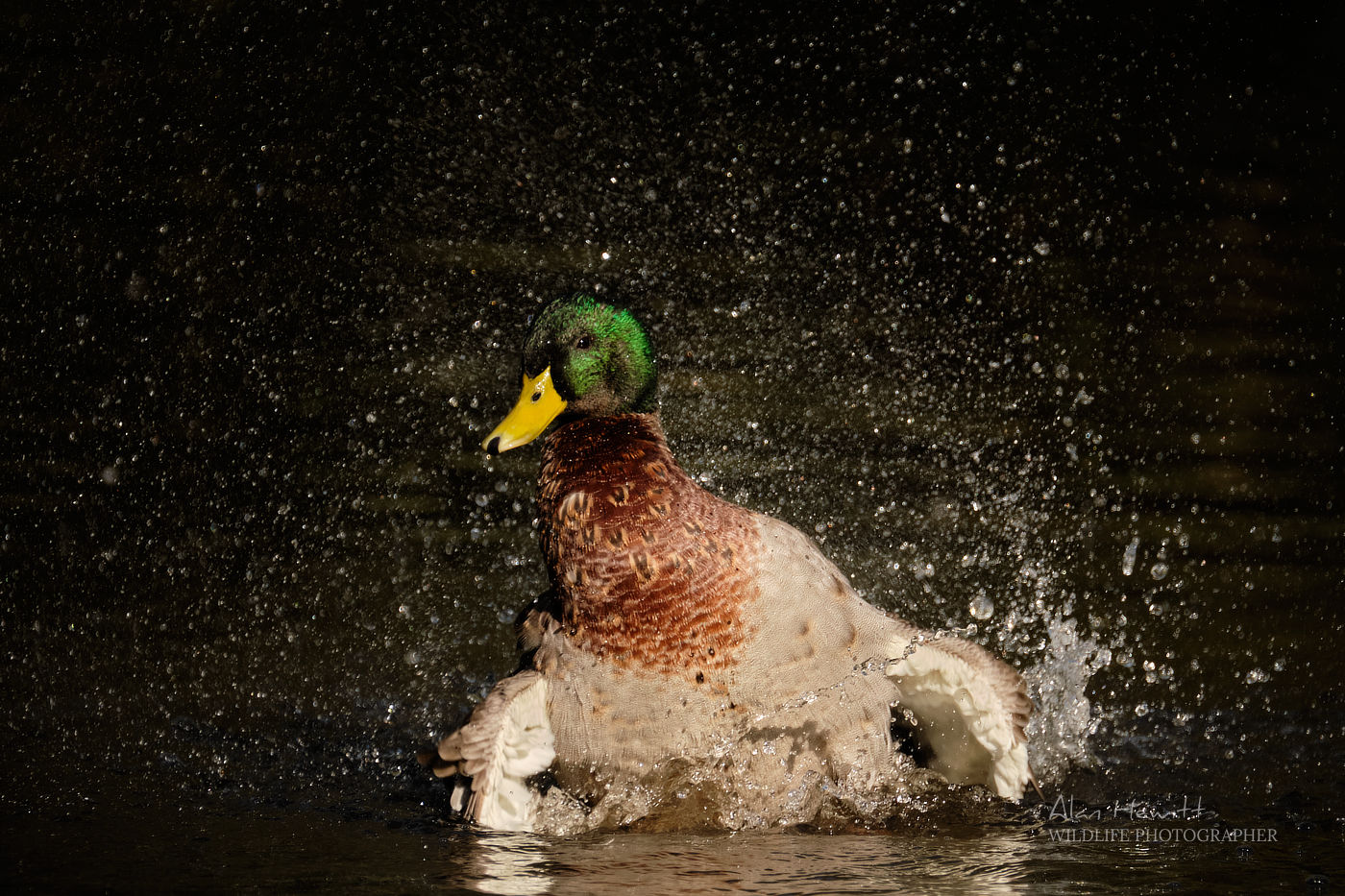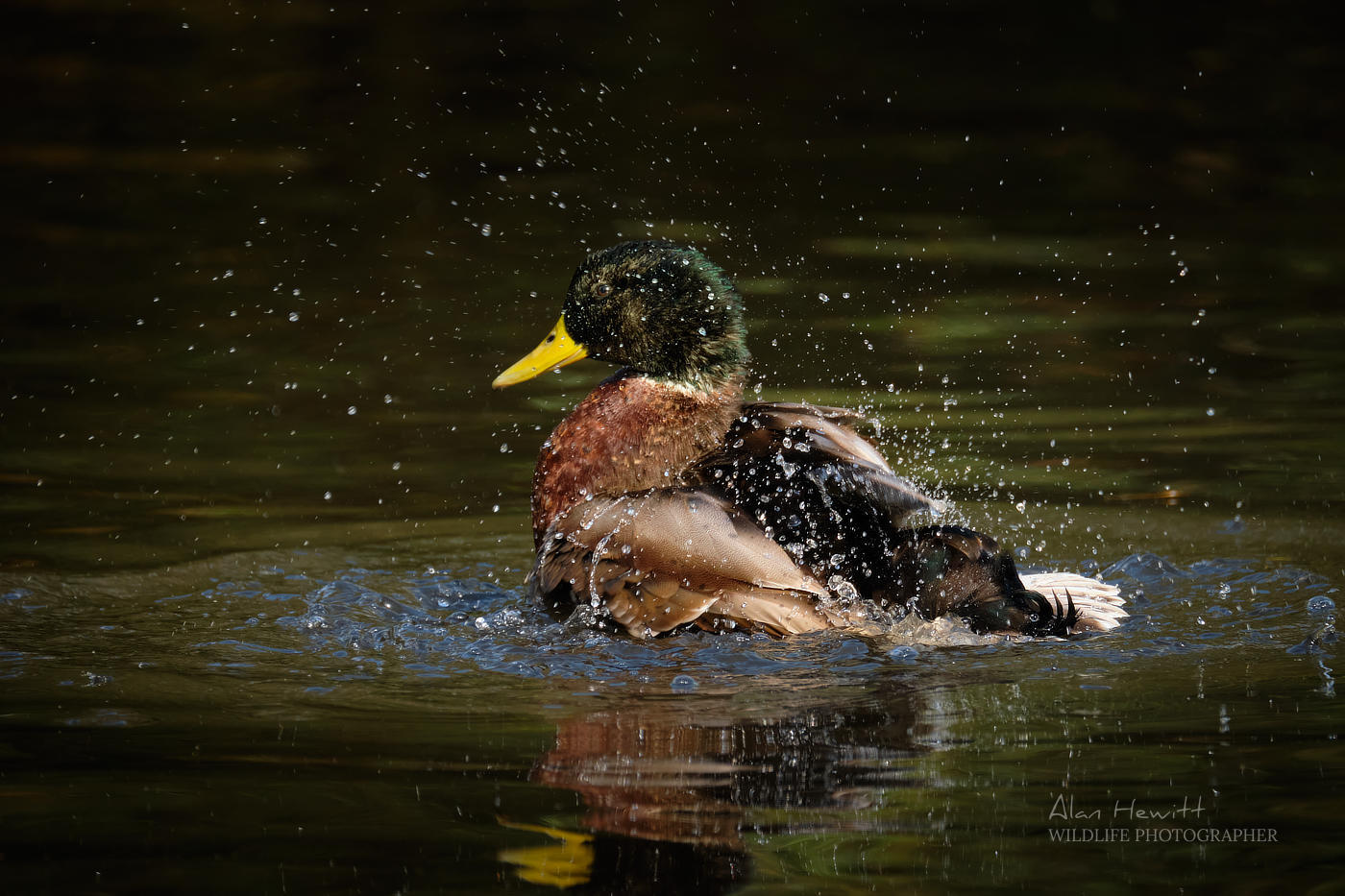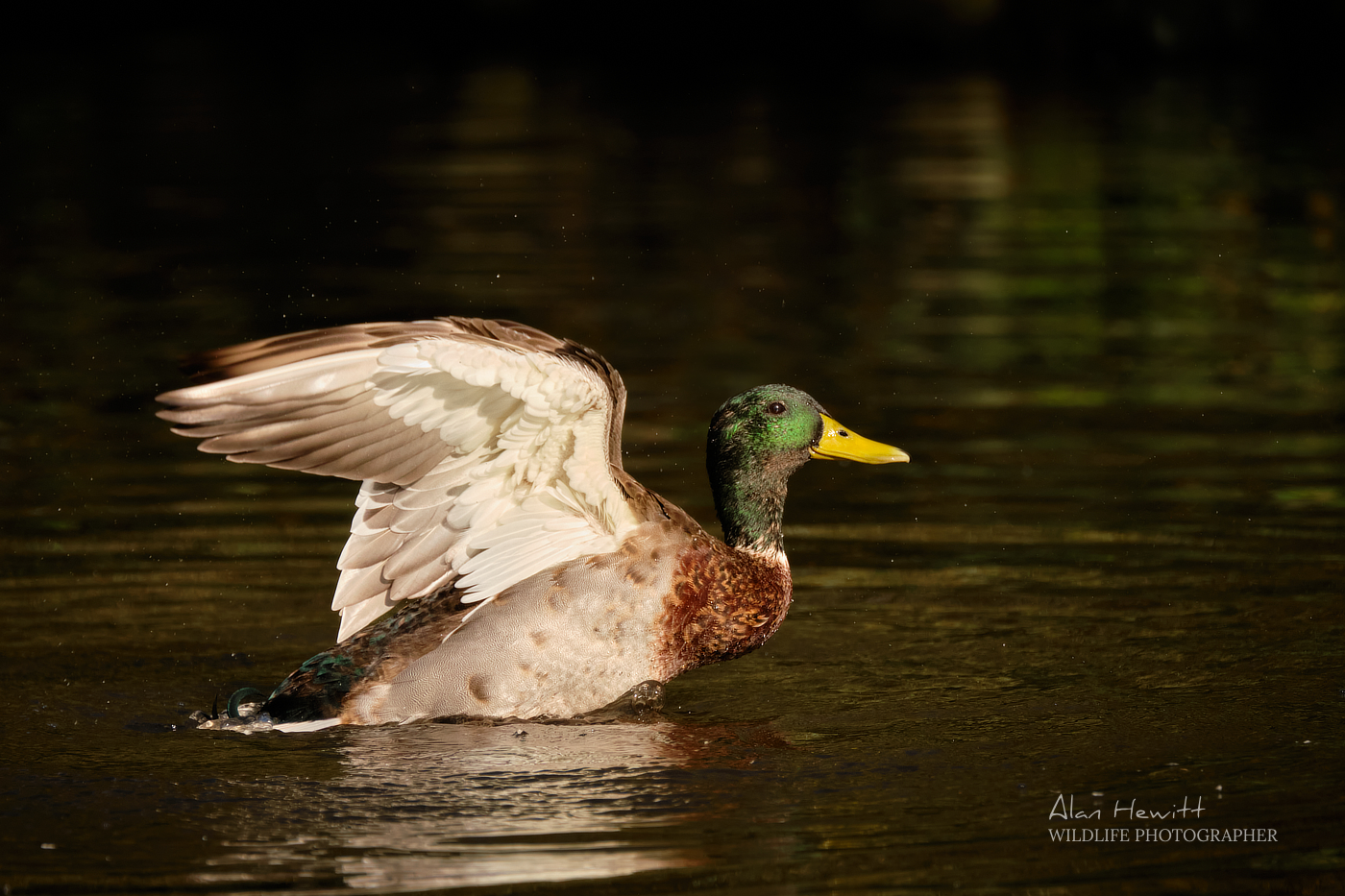In October, I was pleased to be back at WWT Martin Mere in Lancashire working at their North West Bird Fair. It is an event I have also worked at in 2018 and 2019, doing a mixture of photography workshops and talks over the course of the two day event.
During the afternoon prior to the bird fair beginning, I spent a couple of hours wandering through the reserve. There are numerous ponds throughout WWT Martin Mere and one in particular presented a couple of mallard ducks creating a bit of a splash!
Here in the UK, the mallard is our most common duck species and one which a lot of photographers take for granted. In sunlight, their bottle-green head and blue wing coverts reflect an incredible iridesence. Together with some surface bathing behaviour producing wing movement and water action, they can make for an incredibly photogenic and interesting species.
Never underestimate the value of working with common species.
For photographs like these I use a single autofocus point and the full burst mode / frame rate to capture as much of the action as possible. Shutter speeds vary, from over 1/2000 sec to freeze the water and 1/125 sec to introduce a blur to the wings, producing a more dynamic sense of movement.
Working in bright sunlight like this, especially with darker backgrounds requires constant diligence with exposure control. It’s very easy to lose detail by over-exposing the brighter underparts of wings. If you’re using mirrorless cameras, I recommend enabling live EVF highlight alerts to help recognise and avoid this. With a DSLR, you can usually enable this on play back / review of images. In both cases, your camera can be set up to help you by giving you information about your photographs, use it!
All photographs taken using the Fujifilm X-H1 and 100-400mm lens.
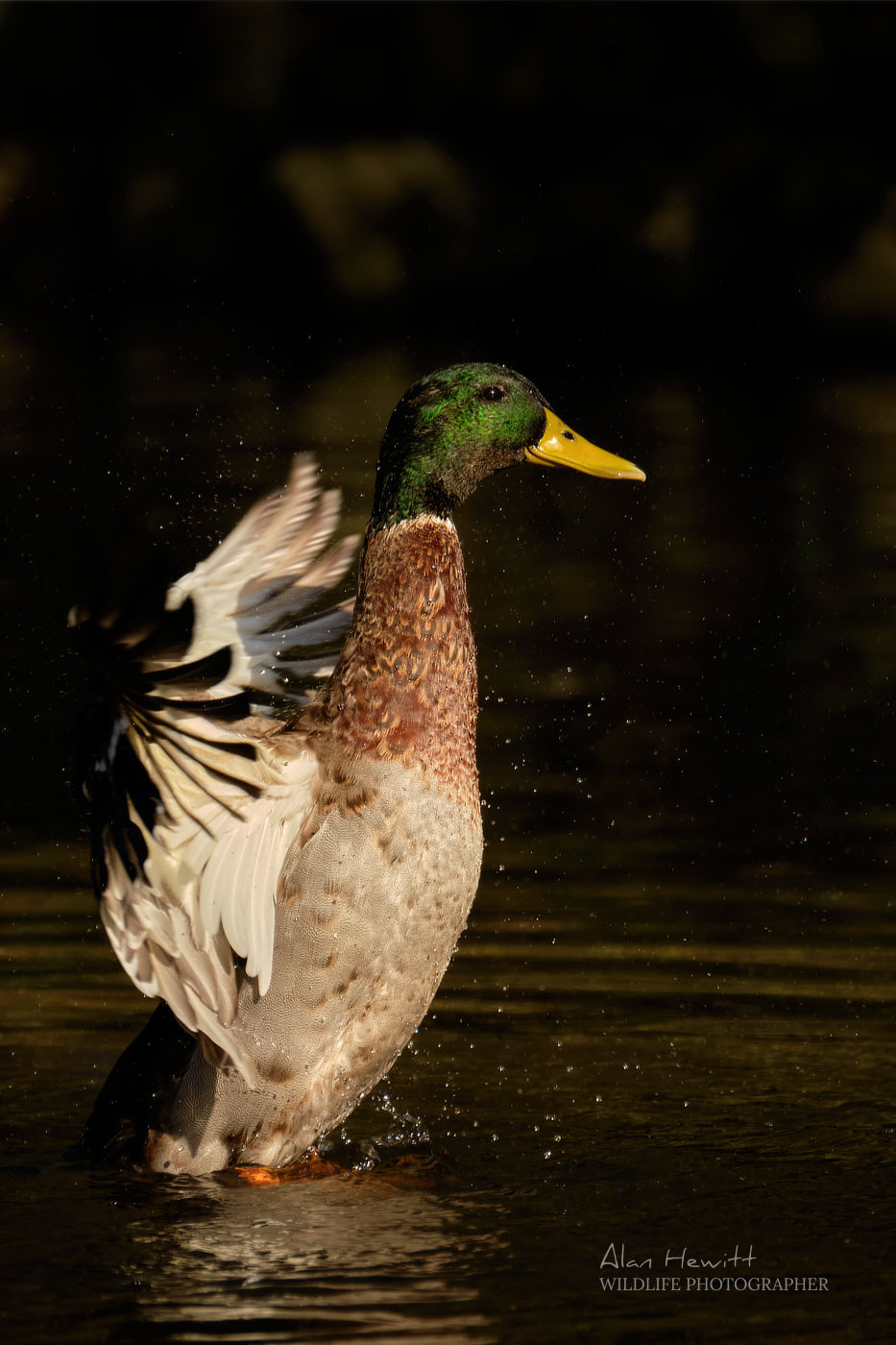
Male Mallard – Fujifilm X-H1 & 100-400mm, (1/2400, f/5.6, ISO1000, 400mm)

